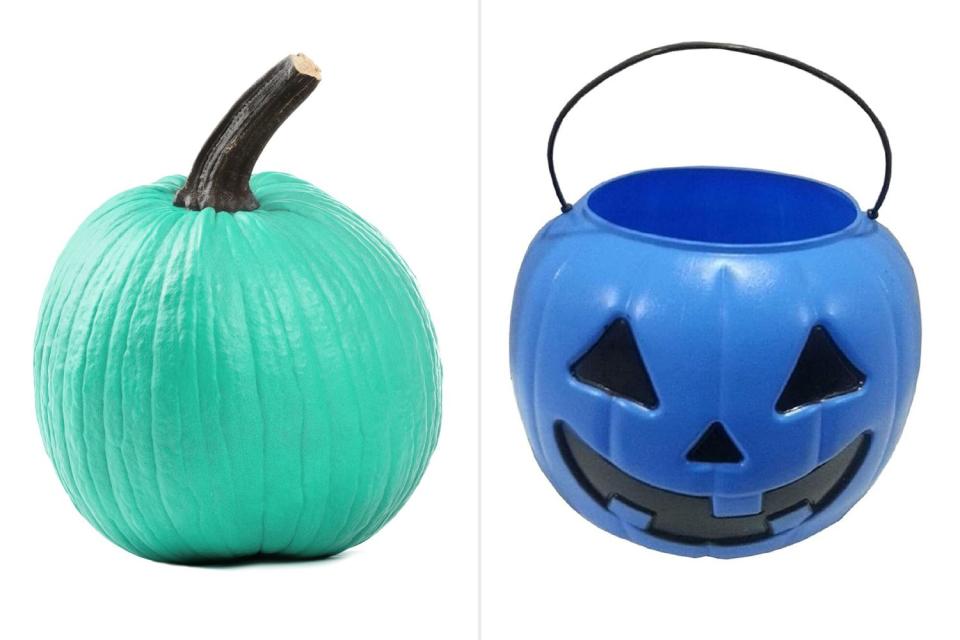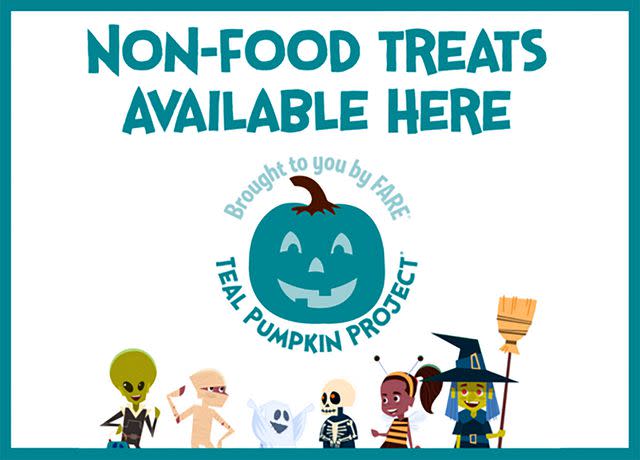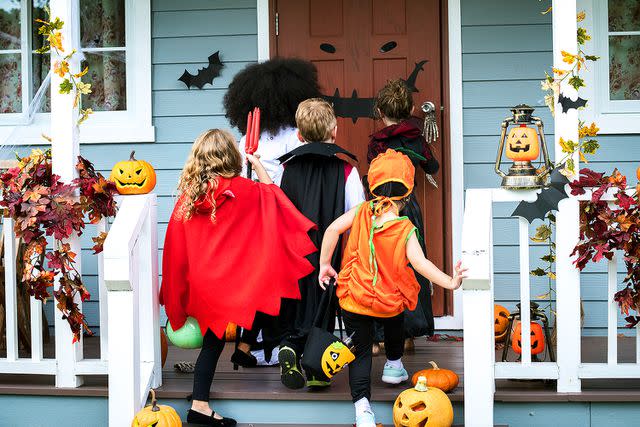What Do Teal Pumpkins and Blue Buckets Mean for Trick-or-Treaters on Halloween?
The colored pumpkins can make the holiday more inclusive

Getty; Amazon
Teal pumpkin, blue bucketColored pumpkins during Halloween have certain meanings that can make the holiday more inclusive.
Teal pumpkins are related to the food allergy community, and blue pumpkins are sometimes used by children with autism.
Thanks to the Teal Pumpkin Project, spearheaded by the Food Allergy Research & Education (FARE), teal pumpkins are used to identify homes offering non-food treats for trick-or-treaters with food allergies or other conditions.

Food Allergy Research & Education
Teal Pumpkin Project flyer"No child should ever be excluded from a celebration because of a disease. Food allergies are a disease of the immune system — not a diet — not a choice," Sung Poblete, PhD, RN, CEO of FARE, tells PEOPLE. "We are grateful that Teal Pumpkin Project, which was created by one food allergy mom working to provide an inclusive experience for her child and other children with food allergies, is now a national initiative."
"Food allergies are a silent epidemic affecting more than 33 million people in the U.S. almost 6 million of whom are children,” adds Poblete.
Related: The Rumors Are True! 7UP Confirms They Are Selling Shirley Temple Soda for a Limited Time
The PEOPLE Puzzler crossword is here! How quickly can you solve it? Play now!
FARE suggests painting a regular pumpkin teal and placing it outside your door if you intend on offering non-food items. The organization also has downloadable signs that adults can print and put on their windows or door. The signs say, "Non-food treats available here."
They suggest items like mini notebooks, playing cards, stickers, fidget toys, mini puzzles, glow sticks, pencils, bubbles, bouncy balls and spider rings.
A child may also trick-or-treat with a teal bucket to symbolize that they can only receive non-food treats.

A similar movement is the use of a blue Halloween bucket, which indicates that the trick-or-treater has autism. But unlike with the teal pumpkins, the blue buckets are a highly-debated topic in the community.
According to the National Autism Association, the initiative began after a mom's photo of her son holding a blue bucket went viral. “If you see someone who appears to be an adult dressed up to trick-or-treat this year carrying this blue bucket, he’s our son! His name is BJ & he is autistic. While he has the body of a 21 year old, he loves Halloween,” she posted on Facebook.
It inspired some parents to buy blue buckets for their own children. The idea is that others may be more accommodating if they see the blue bucket, especially if the child is non-verbal.
Major retailers started carrying blue Halloween buckets, including Amazon, Walmart and Target.
But some parents are against the use of blue buckets because it forces kids to divulge their medical history. Jackie Spinner wrote a 2019 op-ed for The Washington Post about why she "can't get behind " the colored pails.
Never miss a story — sign up for PEOPLE's free daily newsletter to stay up-to-date on the best of what PEOPLE has to offer, from celebrity news to compelling human interest stories.
"Some parents might see the blue bucket as a way to help our kids. I know the many (many) people who alerted me to the idea did so with good intentions," she wrote. "Our society is becoming more aware of autism, more open to inclusion, and my son will benefit from that. But he also shouldn’t have to tell a stranger he is autistic to get some chocolate."
The National Autism Association noted that the blue buckets are a personal choice: "As with most everything else, it’s a choice that should be based on a person’s unique needs."
For more People news, make sure to sign up for our newsletter!
Read the original article on People.


